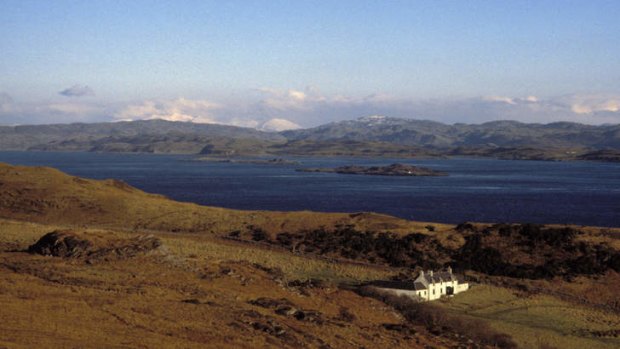
Barnhill Farmhouse on the Isle of Jura, Scotland, where George Orwell wrote 1984.Credit: Alamy
Literary pilgrim Stephen Phelan has explored an author's home or two. From Tolstoy to the Brontes, he shares his favourites.
Most writers spend the better part of their days sitting alone in chairs, slouched over desks, occasionally staring out of windows. In his lifetime, even a beloved crowd-pleaser like Charles Dickens would probably have bored his fans to fits of Victorian weeping if they had to watch him work for more than five minutes. But after a great author dies, his or her property begins to take on a kind of mystic fascination.
Through decades, or centuries, their chairs become artefacts, their rooms become museums and their houses become holy to those readers and travellers who consider themselves "literary pilgrims". I am just such a tourist, and I will gladly bypass a hundred more popular sights to see the birthplace of a Russian novelist, or the deathbed of a Japanese poet.
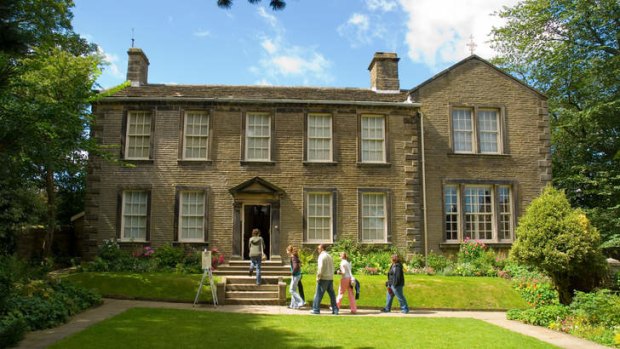
The Bronte Parsonage Museum in Yorkshire, England.Credit: Alamy
Certain writers' houses are themselves major attractions. The Charles Dickens house in Camden Town, London, and Dickens' childhood home in Portsmouth are open to the public and often packed out. The Anne Frank House in Amsterdam draws more than 1 million visitors every year. William Shakespeare's entire home town of Stratford-upon-Avon now seems to resemble an Elizabethan theme park in his honour.
Other great writers may not have quite the same posthumous appeal, and their former homes may not be so well preserved or restored. In many cases there is only a plaque to say that they lived there, and in some cases, no sign at all. But in my experience, the best of these houses feel pleasantly haunted - by ghosts whose work is done, and who no longer mind being disturbed.
Here are five of my personal favourites.
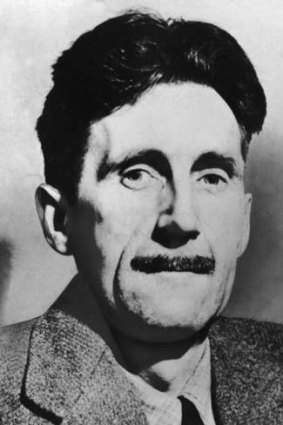
British author George Orwell circa 1945.Credit: Getty Images
Leo Tolstoy
The house Yasnaya Polyana, near Tula, Russia. The country estate where Tolstoy was born, now a private park, museum and learning centre.
Why visit For many, Tolstoy will always be the greatest novelist of all time. For those who don't agree, or just never made it through War And Peace, the estate makes for a beautiful walk in the Russian countryside.
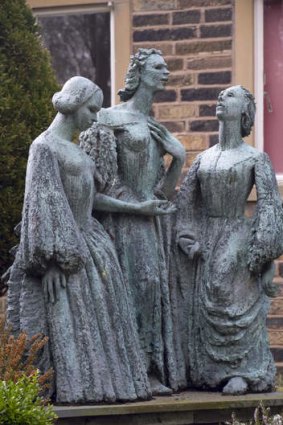
A statue of the Bronte sisters outside their home in West Yorkshire.Credit: Corbis
What to see It's a gloomy, windy Sunday when I visit, and a long, muddy walk from the main road and through the sodden grounds to the mansion house itself. Inside, I tag along with a couple of hungover Scottish newly-weds - hardcore Tolstoy readers who pre-arranged a tour in English for the first day of their honeymoon. Scholar-in-residence Galina Alekseeva talks us through the interiors and contents: the aristocratic family portraits; the library that was later partly burned by occupying Nazis; the so-called "vaulted room" where Tolstoy wrote in the mornings, permitting only his wife, Sofia, to enter with his cups of tea. Beside this, the small cramped room where 5000 mourners came to kiss the hand of his corpse in 1910.
An odd custom has developed around Tolstoy's grave, a simple grass mound in the woods nearby: young couples go to lay flowers and ask the master's blessing for good luck and lasting love. The newly-weds forgot to bring a bouquet, so we just stand there in the cold rain, with the autumn wind stripping leaves off the surrounding oaks. The scene is so melancholy that we have to laugh, which strikes us as a suitably Russian response. We tell ourselves that Tolstoy would approve.
The details: Tolstoy once described Yasnaya Polyana as an "inaccessible literary stronghold", and it remains a bit tricky to get to. Regular trains run from Moscow's Kursky Vokzal station to Tula. From Tula station take a 6 or 7 trolley, followed by the 114 or 117 minibus to the "Mossina" stop. Admission to Yasnaya Polyana costs 20 roubles (just 60¢), but guided tours in English are considerably more expensive and priced according to group size. It's possible to join one on the day, but recommended to book in advance. See ypmuseum.ru.
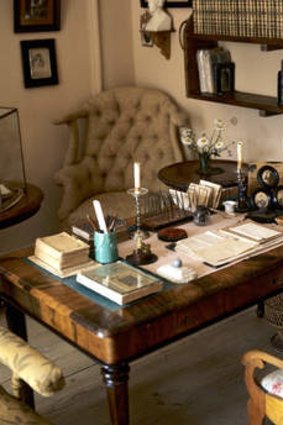
Leo Tolstoy's study at Yasnaya Polyana.Credit: AFP
J.G. Ballard
The house 508 Panyu Road (formerly 31A Amherst Avenue), Shanghai, China. A mock-Tudor reminder of the pre-war city, when the International Settlement was built according to the tastes of wealthy European residents, including the young James Graham Ballard and his parents. The interior was gutted in 2009, but the roof line remains.
Why visit Well, the property is now an upmarket restaurant called the Xin Yue Club, bearing almost no trace of Ballard's childhood home, and no memorial to his presence. But fans of the author's apocalyptic fiction may want to come and consider that this house is one of the few old-fashioned buildings in a city where the past is being bulldozed and rebuilt to look ever more futuristic - all laser lights, transparent skyscrapers and pulsing walls of digital adverts. From certain angles, modern Shanghai looks like one of Ballard's own imaginary dystopias.
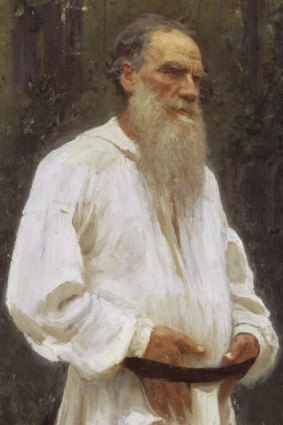
Leo Tolstoy.Credit: AFP
What to see The author himself was acutely unsentimental and said he hoped his childhood home would eventually be turned into a McDonald's or KFC. The Xin Yue Club is more elegant and exclusive than that - a little fancy and pricey for my budget. I find it open but empty on a sweltering summer afternoon, in the lull between lunch and dinner.
The waiters outnumber me 15 to 1, and anxiously follow me en masse while I conduct my own tour of the private dining rooms upstairs, where the adolescent Ballard hid from Japanese forces in the weeks after Pearl Harbour. (Those forces eventually occupied this house, consigning Ballard and his parents to the Lunghua detention centre for much of World War II, an experience lightly fictionalised in his best-known novel, Empire of the Sun.)
They are, however, happy enough to let me sit on the terrace, in the well-tended garden, though one waitress worries that it might be "too hot for you out there". "I'm fine," I tell her, already sweating and burning. She brings me a parasol, a beer and a bucket of ice, and I spend the rest of the afternoon contentedly reading Ballard's memoir, Miracles of Life, the last book he published before his death in 2009.
In it he describes this house and this garden as a kind of lost world, and that loss as the recurring theme of his novels: "the sense that reality itself was a stage set that could be dismantled at any moment ... "
The details: The Xin Yue Club is open daily for lunch and dinner, just down the road from the Shanghai Film Art Centre. Take a subway to Metro Line 10 - it's a short walk or taxi ride from there along the Fa Hua Zhen Road.
George Orwell
The house Barnhill, Isle of Jura, Scotland. A remote farmhouse in the Inner Hebrides, where Orwell lived intermittently from 1946 until his death in 1950 from tuberculosis. The house itself is private property - though available to rent (see below) - but the wild landscape around it is accessible to the public, if a long way off the beaten track.
Why visit To breathe the strong, fresh, salted air that Orwell hoped might soothe his lungs, and enjoy the natural surroundings that perhaps helped him imagine a nightmarish opposite environment for his masterpiece, Nineteen Eighty-Four, which he wrote at Barnhill.
What to see "There's not much going on at Barnhill," warns Captain Duncan Phillips, as he takes me across the Gulf of Corryvreckan in a chartered motor launch. "But there's definitely an atmosphere." On the way, we sail around the notorious whirlpool between Jura and Scarba, which almost drowned Orwell with his niece, nephew and son on an abortive fishing trip. When Phillips drops me off at a derelict jetty on the north side of the island, I walk around the house - which appears to be deserted - and into the adjoining meadow. There's nothing to see except the view over the Sound of Jura, and nothing to hear except birdsong and the sea breeze.
This makes me think of the diary that Orwell kept while living at Barnhill, in which he wrote nothing about the state of the world or his own condition, but only recorded the growth of plants, the movements of wildlife, changes in the weather. Orwell also wrote that "by retaining one's childhood love of such things as trees, fishes, butterflies, one makes a peaceful and decent future a little more likely".
I decide that his ghost would prefer the word "Orwellian" to describe that kind of future, and this kind of landscape.
The details Orwell called Barnhill "an extremely un-getatable place", and even now most of his followers come the long way round - a ferry from the mainland at Kennacraig to the island of Islay, followed by another to Jura, then a long walk or hike up the island to Barnhill.
See islayinfo.com for information. Chartering a boat is costlier but much faster. Captain Duncan Phillips runs day trips and other charter services in the area, phone him on +44 7880 714 165.
The farmhouse at Barnhill is also available to rent for £550 ($800) a week. See theisleofjura.co.uk.
Charlotte, Emily and Anne Bronte
The house Haworth Parsonage, West Yorkshire, England - a lovingly restored 19th-century parochial house, where the prodigious Bronte sisters lived and died young, right beside the parish graveyard.
Why to visit To learn everything there is to know about the Bronte sisters, their curate father, Patrick, and their equally doomed older brother, Branwell. The house is now a museum and rich repository of information, operated by dedicated members of the Bronte Society.
What to see Personally, I've always been a Charlotte fan and I'm pleased to find that most of the personal items on display belonged to her - the only sister who survived long enough to achieve a measure of fame in her lifetime. But the museum does provide plenty of context on the miasma of illness, ambition, frustration and sexual and spiritual tension that floated through this house in the mid-19th century, and fuelled the desperate creative urgency of Emily in particular.
Erudite and approachable staff are also on hand to clarify and demystify the sisters' reputation as the original bodice rippers. In-house librarian Ann Dinsdale tells me that the "passion" of their fiction is often played up at the expense of the social and political aspects. Our conversation devolves into good-natured debate on the best movie adaptation of Charlotte's novel, Jane Eyre. Dinsdale thinks the 1983 TV mini-series, with Zelah Clarke and Timothy Dalton, comes closest to presenting "the lack of choices available to women of the period".
I prefer the old one with Orson Welles as Mr Rochester. A group of visiting schoolgirls join in, to tell us they like the most recent version, with Michael Fassbender. "He's sexy," says one.
The details: Regular local trains run to Haworth from Leeds, the nearest major city. The Bronte Parsonage Museum, near the centre of the village is open year-round, and admission costs £7. See bronte.org.uk/visit.
Pablo Neruda
The house Casa de Isla Negra, near Algarrobo, Chile. An early 20th century beachfront villa that Neruda dreamed of owning as a child and eventually bought in the late 1930s. He later added various extensions according to his whims.
Why to visit Neruda was the rarest kind of poet: world-famous and wealthy enough to divide his time between three large homes. Each one has its charms and they now form a kind of tourist triangle between Santiago, Valparaiso and here at Isla Negra, on the black volcanic coast of Chile. This was Neruda's own favourite and offers visitors the strongest sense of his joie-de-vivre.
What to see The main house itself is quite a sight, resembling the prow of a ship, and the interior lounge is festooned with mermaids and female figureheads that the poet collected from decommissioned sailing vessels. The adjoining annex looks like the inside of a train car, decorated with butterflies, coloured bottles, seashells and whatever other objects caught his magpie-like attention. It's a place that you could happily live and die in, and Neruda had the same idea.
"Friends," he wrote, "bury me in Isla Negra, in front of the sea I know, and every rough area of rocks and waves that my lost eyes no longer see." At the time of my visit, there is talk of exhuming Neruda's body, to confirm or disprove the old rumour that the poet was actually poisoned by his enemies in the military government, who had seized power just days before his death in 1973. Standing over the grave, my guide, Lorena, tells me she shares these suspicions, but shudders at the prospect of such a belated postmortem.
"Even if it was murder," she says, against the sound of crashing waves, "I think we should just let him sleep."
The details: Buses run from Santiago and Valpariso to the resort of Algarrobo. From there it's a short bus or taxi ride to the Casa Museo de Isla Negra. All visitors must sign up to a guided tour, which costs 4000 pesos ($8.10), and it's best to reserve in advance. See fundacionneruda.org.
Sign up for the Traveller Deals newsletter
Get exclusive travel deals delivered straight to your inbox. Sign up now.